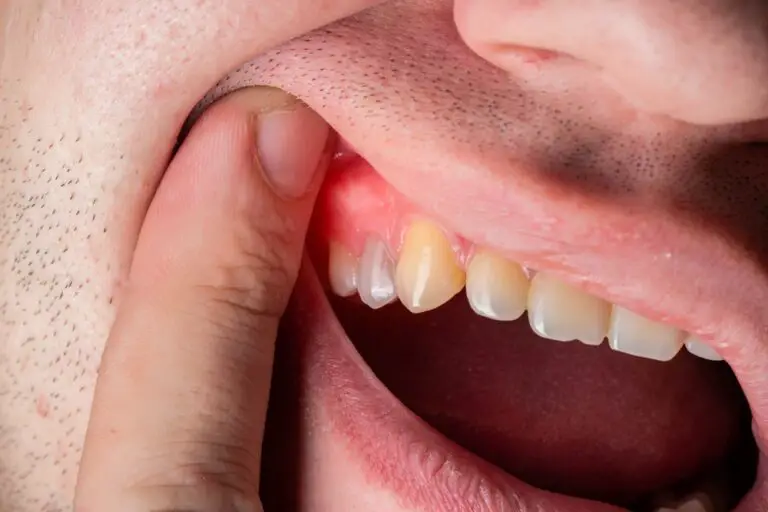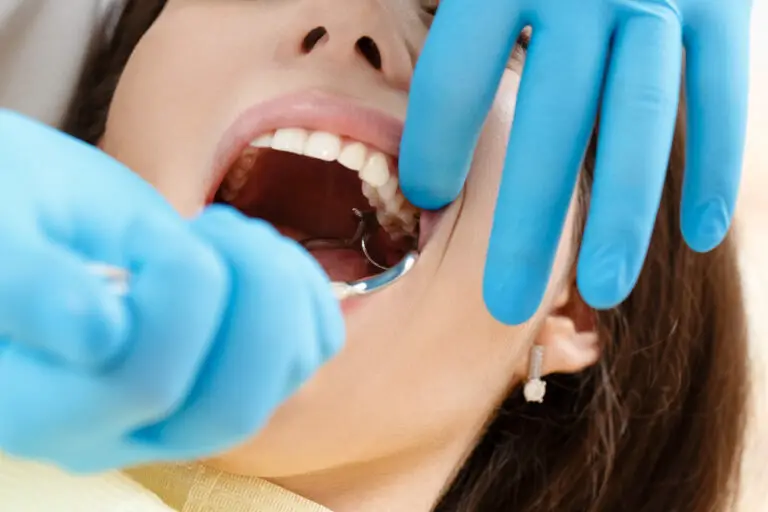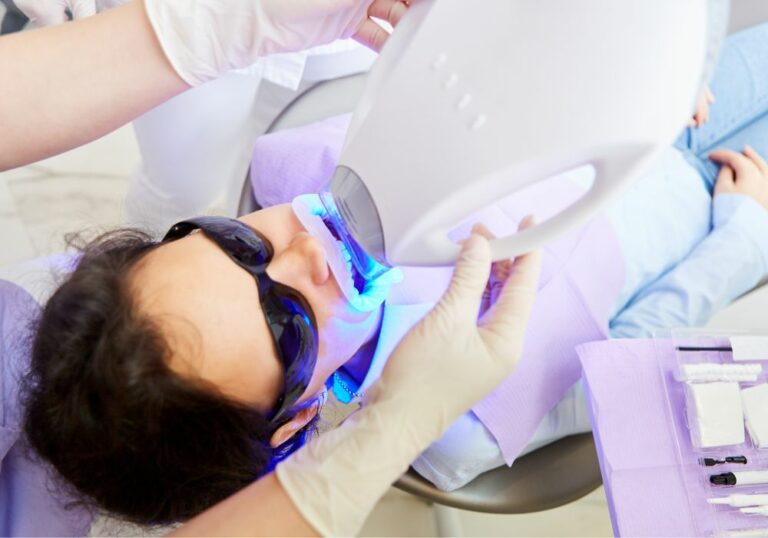There are many reasons why people can get white spots on their teeth. Whatever the cause, you’ll most likely want to get rid of them as quickly as possible. Problems with our teeth can often cause future dental issues but also issues with confidence and self-esteem.
Thankfully, there are several treatments for white spots that can easily get rid of them. Along with looking at these treatments, we’ll also see how you can prevent white spots from ever coming back in the future. Let’s get right to it!
How To Get Rid of White Spots on Teeth
The problem with knowing how to remove white spots on teeth is that there are so many different things that can cause it. There are a wide variety of treatment options available, ranging from simple home treatment to professional dental work.
Many white spots will be removed over time with regular brushing and the use of mouthwash, especially if they are caused by the loss of enamel. For more stubborn white spots, dental treatments may be required such as microabrasion or veneers. Read on to find out what caused your white spots and how you can fix them.
Causes of White Spots
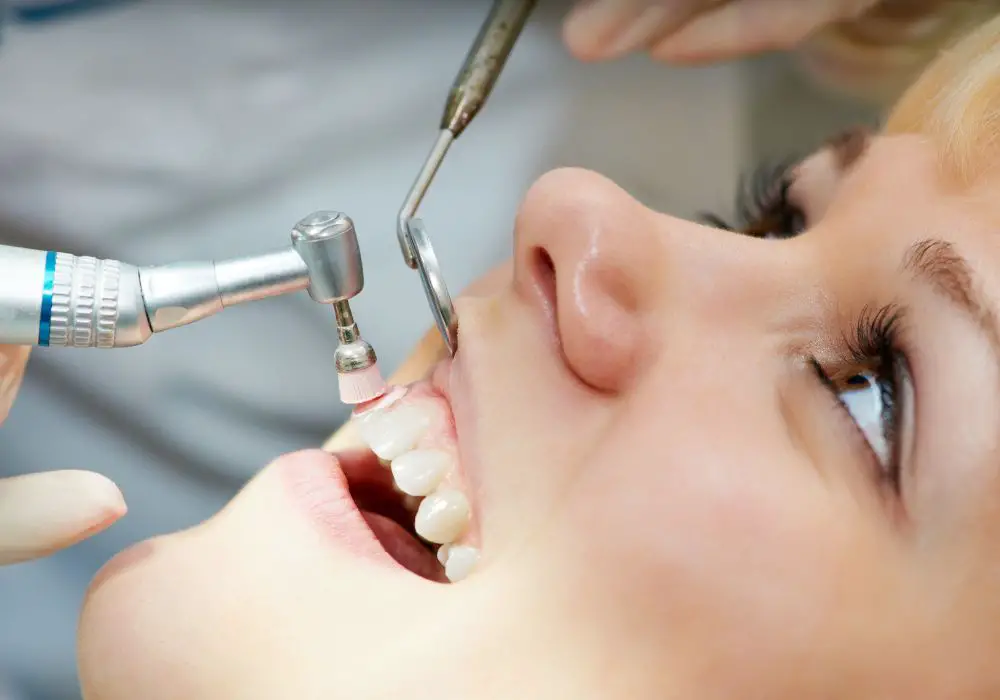
Before looking at treatment options for white spots, it’s important to understand why they appear in the first place. Knowing this will give you a better idea of how to get rid of them along with preventing them from coming back.
- Dental Fluorosis – This is a condition whereby children consume excessive amounts of fluoride as they grow. Fluoride is a mineral that is generally seen as good for teeth but if you have too much of it during development, it can cause white streaks.
- Enamel Hypoplasia – Here we have another condition caused during development. This is when the enamel on your teeth doesn’t develop properly which can cause either white or yellow spots. Both the two conditions mentioned will have developed at a very young age.
- Poor Hygiene – If you have an accumulation of plaque on your teeth then this is going to wear away the enamel. When it does, white spots can begin to form. This can also be caused by consuming too many acid products, such as citrus fruits or energy drinks.
- Braces – This is related to the above but it’s too harsh to call it poor hygiene. With braces, it can be very difficult to properly remove the plaque. Due to this, white spots can be shown when the braces are removed.
- Dry Mouth – A lot of the causes of white spots can be down to the demineralization of the teeth. This is one of the many reasons why saliva can be so important. If you frequently have a dry mouth, this could be causing your white spots.
- Mouth Trauma – White spots can also be caused if you’ve had any type of mouth trauma. This is rare if your teeth are already fully developed but can happen if developing teeth have been struck by an object or a fall.
- Tetracycline Antibiotics – These are antibiotics that are needed for a wide range of infectious diseases. One of their side effects is that they can affect tooth development, including causing white spots on your teeth.
- Excessive Whitening Products – The final cause of white spots is if you have used whitening products. Using them too much, or using them incorrectly, can cause white spots to form on your teeth.
Treatment Options for White Spots

Now we know about all the causes of white spots, how can you get rid of them? The right solution can depend on how your white spots were formed but here are all the options available to you.
- Maintain Good Oral Hygiene – The first step in removing your white spots should be maintaining good oral hygiene, especially brushing twice per day for two minutes each time. Along with this, it’s a good idea to floss every day and use mouthwash.
- Fluoride Treatment – As we mentioned above, fluoride has long been associated with tooth care. Fluoride is a mineral and a treatment from a dentist can help to remineralize teeth and reduce white spots. You should also use fluoride toothpaste, but almost all toothpastes already have it as an ingredient.
- Microabrasion – This is a dental treatment that will remove discolorations from the surface of the tooth. This is often done with acid and abrasive to help to bring a normal color back to your teeth but it does have the downside of removing enamel.
- Tooth-Colored Fillings or Bonding – Often used for minor damage or gaps in teeth, bonding can be used to remove white spots. A resin will be applied to your teeth and then made to mimic its natural color.
- Dental Veneers – This solution is advised when you have significant discoloration over large areas, as it’s a significant and expensive procedure. This is where a thin shell is applied to the front of your teeth, giving them a naturally white appearance.
- Calcium and Vitamin D Supplementation – Another possible solution is to use both calcium and Vitamin D supplements. While these are closely linked to improving oral health, any positive effect they’d have on white spots would be longer-term.
- Teeth Whitening – While excessive teeth whitening can cause white spots, it can also solve it. If you have a whitening treatment when it will help to change your teeth into one uniform color. This would hide the white spot as it’d blend in with the rest of your teeth.
What is the Best Treatment Option for Me?
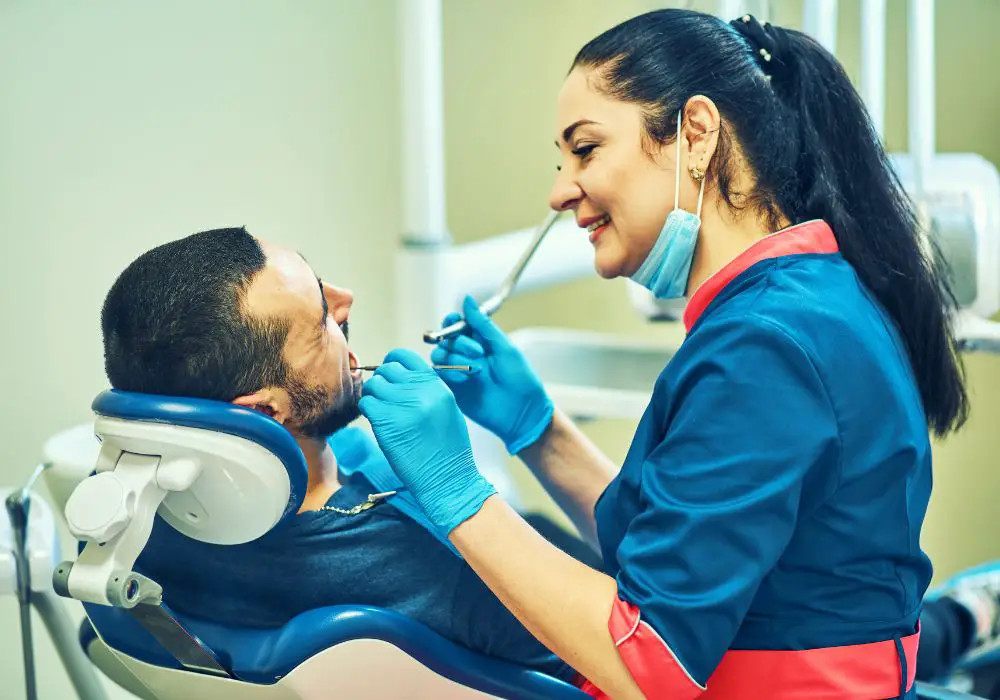
We looked at several different treatment options for white spots but which one is the best option for you? The answer can depend on when you received the white spot and how severe it is.
If the white spot has only recently developed, then it’s likely to be due to the likes of poor oral hygiene or your diet. If so, then it’s likely that less evasive treatments may work such as simply improving your oral hygiene or having a fluoride treatment.
If you’ve had your white spot from birth then it’s likely that you’ll need a professional treatment. Whether you choose veneers, microabrasion, bonding, or whitening, it depends on your budget and also the advice of your dentist.
Preventing White Spots Returning
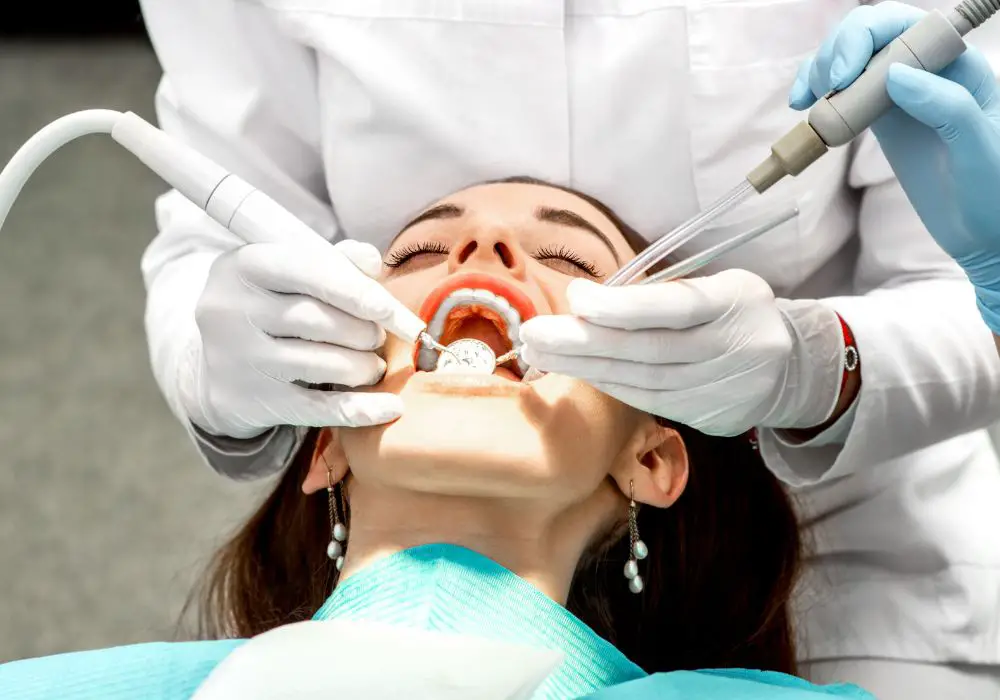
Once you have gotten rid of the white spots, then you’ll want to ensure that they never return. Here are some great tips!
- Brushing and Flossing – It’s the most obvious prevention method but keeping on top of your oral hygiene by brushing and flossing will reduce the chance of any white spots coming back.
- Avoid Smoking and Chewing Tobacco – Smoking can contribute to a wide number of dental and mouth issues, including white spots. There are many reasons to quit smoking, but white spots are among them.
- Professional Cleaning – Regular visits to the dentist are a must but it’s also a good idea to have them professionally cleaned every now and then. This will help to ensure that any spots you miss will be properly cleaned.
- Avoid Acidic and Sugary Foods and Drinks – Even if you have excellent oral hygiene, if you’re consuming high volumes of acid and/or sugar, then you’ll be fighting a losing battle. Limit your intake of these and brush your teeth shortly after consumption.
- Use Fluoride – You need to ensure that you’re taking on plenty of fluoride. This is usually added to tap water so ensure that you’re staying hydrated. Also, ensure that the toothpaste that you’re using contains fluoride.
- Manage Dry Mouth – If you suffer from a dry mouth then take steps to keep your mouth moist and be mindful of ensuring that your mouth doesn’t stay dry for long time periods.
- Be Cautious with Braces – If you have to wear braces, you need to be even more vigilant with your cleaning routine. On your dental visits, ask about the build-up of plaque and any potential white spots.
Home Remedies for White Spots

You may read about many home remedies when it comes to either removing white spots from teeth or whitening teeth in general. One of these is using lemon juice and salt and rubbing these into your teeth, along with other methods such as using coconut oil as a mouthwash, called oil pulling.
There is little to no evidence that any of these home remedies work. Not only that, but the likes of rubbing acid into your teeth can do more harm than good. None of these solutions is going to be better than simply using high-quality toothpaste.
Conclusion
There is not one solution for white spots that is going to be perfect for everyone. The treatment option for you will depend on the severity of the white spot and when it formed. The best idea is to start with excellent oral hygiene and then go from there.
If you have severe white spots there is a variety of treatments to choose from. Once you have removed the white spots, follow our prevention tips to ensure that they never come back. Hopefully soon you can have a smile to be proud of!


